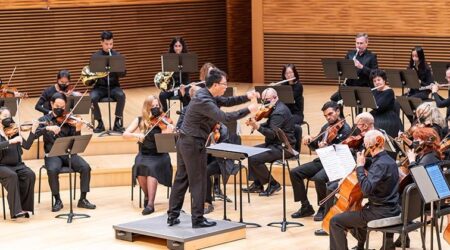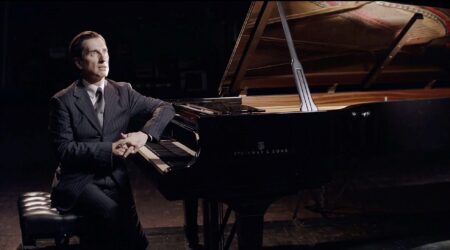Christmas Time in France
Christmas time in Paris is a choreographed routine innately practiced by every Parisian. That iconic frown curves ever so slightly upwards, mere window shopping becomes actual debt and bulging bags, and the magical streets are each meticulously adorned with festive holiday lights. I once thought Paris was the most beautiful in the rain, but I […]
Christmas time in Paris is a choreographed routine innately practiced by every Parisian. That iconic frown curves ever so slightly upwards, mere window shopping becomes actual debt and bulging bags, and the magical streets are each meticulously adorned with festive holiday lights. I once thought Paris was the most beautiful in the rain, but I was proven wrong upon witnessing my first Christmas in the city. Champs-Elysee becomes a winter wonderland, capable of raising the holiday spirit of even the Grinch himself.
The avenue stretching from the Arc de Triomphe to the famous Place de la Concorde is lined with lighted trees, banks of decorated Christmas trees, oversized ornaments, all leading to the most famous Christmas market in Paris. This market offers everything from mulled wine, sausage, cheese, toys, handcrafted decorations, to restaurants and an outdoor ice rink. International Christmas songs fill the air, as tourists and locals alike walk slowly by each cabin-inspired kiosk while a light sheet of snow falls from the sky. Once at the end of the market, each spectator is merged into La Place de la Concorde to find the Paris Wheel, and the city’s largest Christmas tree.
“It is very beautiful in Paris and very lonely at Christmas time,” wrote Ernest Hemingway, from The Toronto Star, 1923, re-published in By-Line: Ernest Hemingway (via The Hemingway Project). Despite the enchantment of the city during Christmas time, Hemingway had it right: Paris is lonely. The streets are as crowded as ever by tourists, but for those living in the city the streets might as well be empty. The ambiance loses a bit of originality because most of the Parisians flee the city to spend the holiday with family. Those who brave the celebration in Paris often find themselves alone, surrounded by tourists who denaturalize the city’s atmosphere by smiling too much and not speaking French.
Meanwhile, the real Parisians are off celebrating Christmas and Christmas Eve with their family in one of the many other regions of France. Much like in the U.S., many of the traditional activities of a French Christmas have been lost over the years. The holiday has been modernized to meet commercial and scheduling needs rather than religious ceremonies. However, there are still many members of French society who follow Christmas past traditions more closely than others, while others replace and modify the traditions to meet the needs and desires of their own family. Whether or not a family decides to celebrate Christmas traditionally, the French still have unique nationally-practiced customs.
The Man with a Thousand Names
In France, Santa Clause is known as Père Noël, or Father Christmas, but his name is not the only thing about him that is different in France; his overall performance is also different. Instead of landing on the roof with his reindeer and sleigh on Christmas Eve, then sneaking down the chimney while everyone is asleep, and dropping cookie crumbs as he places gifts under the tree, he actually just shows up through the front door at midnight while everyone is awake. He is immediately offered cookies and milk, which he modestly nibbles for show, then hands out gifts. Father Christmas is typically played by a male volunteer of the family. He puts on a show while handing out the gifts to both children and adults. Each gift is not from Santa himself, but from the “Santa of the one who purchased the gift.”
Basically, Father Christmas breaks into the houses of family members during the night, and hauls all of the gifts to where the Great Supper is being held. He then hands out the gifts on behalf of each person. French children do not receive one special gift from Father Christmas as children do in the U.S. They receive many gifts from his hands, on the part of a family member. Naturally, the gifts handed to children on behalf of their parents are more elaborate than those given to them on behalf of other family members. After the gifts are distributed, Father Christmas quickly leaves, while the family is left to thank one another and enjoy their new gifts.
The Filling of the Shoe
In modern American culture, we hang our Christmas stockings within proximity of the Christmas tree, in hopes that Santa will fill them with treats and small gifts for well-behaved children, rather than coal, which is reserved for the naughty children. In France, children traditionally leave their shoes under the tree to be filled with small toys and candy. Although the shoe is traditional, many people in France hang stockings in the same manner as the Americans.
Instead of coal for bad children, in some French regions there exists a Père Fouettard, which literally translates to “the Whipping Father.” His role is to make the rounds with Santa, punishing the bad children while Santa hands out gifts to the good children. The manner in which he punishes the children is disturbing: he beats them in their sleep, or in front of others with a bundle of switches, a large stick or a whip. In some cases he also leaves them a lump of coal after the flogging. During the entire month of December, up to Christmas Eve, children are warned by their parents that if they do not behave, Père Fouettard will come during the night to whip them. He is traditionally covered in soot, with a sinister, sometimes deformed face, adorned in black robes. He also carries upon his back a wicker pack, in which he sometimes has been known to carry off naughty children. A lump of coal is not so scary; this threat however, would definitely keep me up at night, with bouts of nightmares in between troubled sleep.
Christmas Eve
and Christmas Day
In France, there are a few families who wait until Christmas morning to exchange gifts, but the majority of people wait for Père Noël to hand out gifts at midnight after the Great Supper of Christmas Eve. Children in France, therefore do not leave milk and cookies out for Santa and they do not stay up in anticipation of the following morning. Nor is there the element of surprise that American children have when spotting the grand gift from Santa comfortably nestled under the tree. On Christmas day, people sleep in unless attending a church service. There usually is not a second Great Supper, simply leftovers eaten throughout the day.
The Great Supper
In both the U.S. and France, it is customary to have a large feast with family and friends to celebrate the holiday. The main two differences are the date and the menu. In the U.S., many families have the meal on Christmas day whereas in France, it is always on Christmas Eve. Their menu is quite different as well, traditionally consisting of seven meatless dishes, seven different types of wine, and thirteen different desserts, one of which is the chocolate Yule log cake. They eat a lot of seafood, and Foie Gras is an essential part of the holiday celebration. All of this is supposed to be served on three white tablecloths of decreasing sizes, accompanied by three candles. Each number has a religious meaning: the number three is for the Holy Trinity, the number seven represents Mary’s pains, and the number thirteen either represents Jesus and the Twelve Apostles, or the Four Mendicant Orders of the poor, the rich, the good, and the evil. The latter meanings differ from region to region.
Decorations and Commercial Marketing
One thing I miss about Christmas in the U.S. is looking at Christmas lights. A childhood custom was to drive around on Christmas Eve looking at all of the elaborately decorated houses. In France, the only outdoor decorations to be seen are those adorning the streets provided by the city. Commercially-speaking, in America, we decorate everything! There is no way to go outside without being reminded that it is the holiday season, which means that it’s time to spend money.
Since the French still focus more on family, the Christmas marketing campaigns are more discrete. Families put up a Christmas tree, hang stockings, and always set out a nativity scene. The nativity scenes are the most important part of any household and church Christmas decorations. The French nativity scenes differ from those typically set up by Americans. The essential figures are there, such as Mary, Joseph, and Jesus, but there are also typical townsfolk such as the local baker, farmer, old lady, old man, and domestic animals, all of which are set up going about their habitual routines.
Christmas time in Paris is an enchanting way to pass the holiday season, despite the bitter cold and large crowds. For those who wish to experience a traditional Christmas, or those who want to interact with Parisians, the Paris region may not be ideal, because the majority of locals leave Paris for Christmas. The French do not celebrate Christmas the same way as many Americans, but the foundations are there. Church ceremonies are held depicting the true meaning of Christmas, there are decorated Christmas trees, street decorations, a Santa Clause who hands out gifts, a great feast, and time spent with family and friends.
Jacqueline Perrier-Gillette is currently a resident of Paris, France, where she lives with her husband. Together the two of them operate their small translation company, giving Jacqueline the opportunity to observe the French and their culture up close. She is an avid reader, writer, and student of foreign languages.
By Jacqueline Perrier-Gillette






